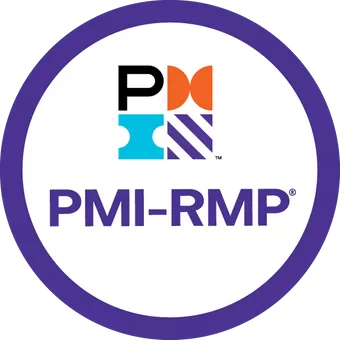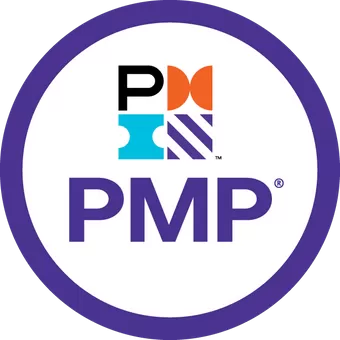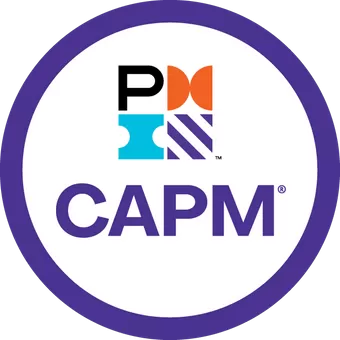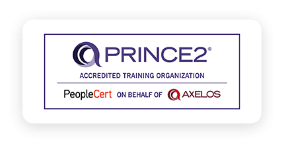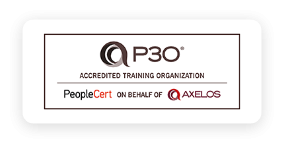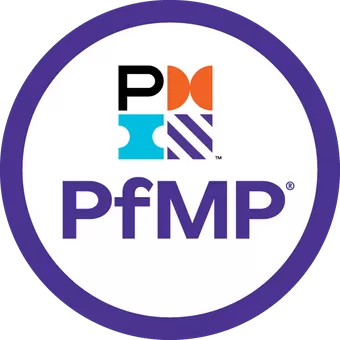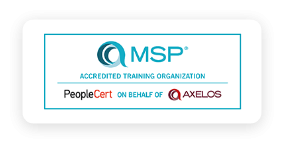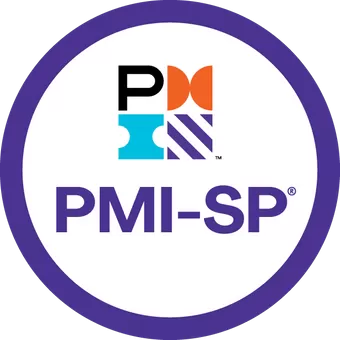
Operating Model: Elements, Benefits, Types, and Examples
Written By : Bakkah
26 May 2024
The operating model of a business encompasses several key elements that define how the organization operates and delivers value. These elements typically include the organization's core activities, processes, technologies, resources, capabilities, and governance structures.
Each element plays a crucial role in determining how efficiently and effectively the business functions. For example, processes outline the steps involved in delivering products or services, while technologies enable automation and digitalization.
Resources such as human capital, financial assets, and physical infrastructure support the execution of activities, and governance structures provide oversight and decision-making frameworks.
What is an Operating Model?
An Operating Model is a blueprint or framework that defines how an organization carries out its day-to-day operations and delivers value to stakeholders. It encompasses various elements such as processes, technologies, resources, capabilities, and governance structures that collectively determine how the organization functions.
The operating model provides a structured approach for aligning the organization's activities with its strategic objectives and goals. It outlines the roles and responsibilities of different stakeholders, the flow of work and information, and the use of resources to achieve desired outcomes. Essentially, the operating model serves as a guide for how the organization operates, interacts with its environment, and creates value for its customers, employees, shareholders, and other stakeholders.
What are the Elements of the Operating Model?
The following elements collectively define how the organization operates and delivers value to its stakeholders, guiding its strategic direction and execution. The elements of an operating model typically include:
1. Processes
The series of steps or activities that transform inputs into outputs to deliver value to customers or stakeholders.
2. Organization Structure
The hierarchical arrangement of roles, responsibilities, and reporting lines within the organization.
3. Governance
The framework of policies, procedures, and decision-making processes that guide how the organization is managed and controlled.
4. Technology
The systems, tools, and infrastructure used to support and automate various business processes and activities.
5. People and Skills
The workforce capabilities, competencies, and expertise required to execute the organization's activities effectively.
6. Culture and Values
The shared beliefs, norms, and behaviors that shape the organization's identity and guide how people interact and work together.
7. Metrics and Key Performance Indicators (KPIs)
The measures used to assess the performance and effectiveness of the organization's operations and strategic objectives.
8. Partnerships and Ecosystems
The external relationships and collaborations with suppliers, vendors, partners, and other stakeholders contribute to the organization's value chain.
Benefits of an Operating Model
A well-defined and effectively implemented operating model can drive organizational performance, competitiveness, and long-term sustainability. Where the operating model offers several benefits to organizations, including:
1. Clarity and Alignment
It provides a clear and structured framework for defining how the organization operates, ensuring alignment between its strategy, processes, and resources.
2. Efficiency and Effectiveness
By optimizing processes, roles, and resources, the operating model helps improve operational efficiency and effectiveness, reducing costs and enhancing productivity.
3. Scalability and Flexibility
A well-designed operating model can adapt to changing business needs and scale to accommodate growth or contraction, enabling the organization to remain agile and responsive to market dynamics.
4. Risk Management
It helps identify and mitigate risks associated with operations, governance, and compliance, enhancing the organization's resilience and ability to manage uncertainties.
5. Customer Focus
By aligning processes and resources with customer needs and expectations, the operating model enables the organization to deliver value and improve customer satisfaction.
6. Innovation and Agility
It fosters a culture of innovation and continuous improvement by providing a foundation for experimentation, collaboration, and learning.
7. Decision-Making
The operating model provides data-driven insights and performance metrics that support informed decision-making and strategic planning across the organization.
How Does an Operating Model Work?
An operating model works by defining the fundamental structure, processes, capabilities, and governance mechanisms that enable an organization to deliver on its strategic objectives. An effective operating model acts as a blueprint for how the organization operates, enabling it to achieve its strategic goals, optimize performance, and drive sustainable growth and value creation. Here's how it typically functions:
1. Define Objectives and Strategy
The process begins with the organization defining its strategic objectives and desired outcomes. These goals provide the foundation for designing the operating model.
2. Identify Operating Model Components
The organization identifies key components of its operating model, including its processes, organizational structure, technology systems, people capabilities, and governance mechanisms.
3. Design and Develop
Based on the strategic objectives and identified components, the organization designs the operating model to optimize its operations, ensure alignment with strategy, and meet stakeholder needs. This involves defining workflows, roles and responsibilities, resource allocation, technology requirements, and performance metrics.
4. Implementation
Once the operating model is designed, it is implemented across the organization. This may involve changes to organizational structures, processes, systems, and workforce capabilities. Effective communication, training, and change management are essential during this phase.
5. Monitor and Evaluate
After implementation, the organization continuously monitors and evaluates the effectiveness of the operating model. This involves tracking key performance indicators, gathering feedback from stakeholders, and making adjustments as needed to optimize performance and adapt to changing circumstances.
6. Iterative Improvement
The operating model is not static but evolves in response to internal and external factors. Organizations regularly review and refine their operating model to ensure it remains aligned with strategic objectives, addresses emerging challenges, and leverages new opportunities.
Types of Operating Model
Operating models can vary significantly depending on the nature of the organization, its industry, and its strategic objectives. Many organizations may adopt hybrid or customized operating models based on their unique circumstances and strategic priorities. The key is to design an operating model that aligns with the organization's goals, enhances its competitive advantage, and enables it to deliver value to customers and stakeholders. Some common types of operating models include:
1. Functional Operating Model
In this model, the organization is structured around functional departments such as marketing, finance, operations, and human resources. Each department operates independently, focusing on its specific functions and responsibilities.
2. Divisional Operating Model
In a divisional model, the organization is divided into autonomous divisions or business units, each responsible for a specific product line, geographic region, or customer segment. This model allows for greater specialization and customization to meet the needs of different markets or product lines.
3. Matrix Operating Model
The matrix model combines elements of both functional and divisional structures, where employees report to both functional managers and project or product managers. This allows for cross-functional collaboration and resource sharing while maintaining functional expertise.
4. Network Operating Model
In a network model, the organization collaborates with external partners, suppliers, and service providers to deliver products or services. This model emphasizes agility, flexibility, and leveraging external expertise and resources to meet customer needs.
5. Platform Operating Model
This model revolves around creating and managing a platform or ecosystem that connects producers and consumers of goods or services. Examples include online marketplaces, social media platforms, and software-as-a-service (SaaS) platforms.
6. Digital Operating Model
In the digital age, organizations are increasingly adopting digital operating models that leverage technology to streamline processes, enhance customer experiences, and drive innovation. This may involve digitizing operations, implementing data-driven decision-making, and embracing emerging technologies like artificial intelligence and automation.
Operating Model Examples
These examples demonstrate how operating models can be tailored to suit the unique needs and challenges of specific industries and organizations, emphasizing different structures, processes, and capabilities to achieve strategic objectives and deliver value to stakeholders. Operating models can vary widely across different industries and organizations, but here are a few examples to illustrate the diversity:
1. Retail Operating Model
A retail company may adopt a functional operating model where departments are organized by function (e.g., sales, marketing, operations) to efficiently manage store operations, supply chain logistics, and customer service.
2. Banking Operating Model
A bank might utilize a divisional operating model, with separate divisions for retail banking, commercial banking, and investment banking, each catering to different customer segments and financial needs.
3. Tech Company Operating Model
A technology firm may employ a matrix operating model, combining functional expertise with project-based teams to develop and deliver software products or IT solutions, leveraging both functional and project managers.
4. Healthcare Operating Model
A hospital might operate using a network model, collaborating with external healthcare providers, insurers, and specialists to deliver comprehensive patient care across different medical specialities and treatment modalities.
5. Automotive Operating Model
An automobile manufacturer may adopt a platform operating model, creating an ecosystem that connects dealerships, suppliers, and customers through digital platforms for sales, service, and support.
6. E-commerce Operating Model
An e-commerce company could implement a digital operating model, leveraging technology and data analytics to optimize online sales channels, personalize customer experiences, and manage inventory and fulfilment operations efficiently.
Difference between Operating Models and Strategy Execution
Operating models and strategy execution are closely related concepts, but they serve different purposes and focus on different aspects of organizational management. Here are the key points of difference between them:
The Difference |
Operating Models |
Strategy Execution |
Purpose and Focus |
An operating model defines how an organization structures and operates its key functions, processes, and resources to deliver value to customers and stakeholders. It provides a blueprint for how the organization will execute its business activities on a day-to-day basis. |
Strategy execution refers to the process of implementing and operationalizing the organization's strategic plan. It involves translating high-level strategic goals and objectives into actionable initiatives, projects, and activities to achieve desired outcomes. |
Scope and Level of Detail |
Operating models typically encompass a broad range of organizational components, including structure, processes, technology, capabilities, and culture. They provide detailed guidance on how different parts of the organization will collaborate and function to achieve operational efficiency and effectiveness. |
Strategy execution focuses specifically on the implementation of strategic initiatives and projects identified in the organization's strategic plan. It involves defining clear goals, allocating resources, managing risks, and monitoring progress to ensure that strategic objectives are met. |
Longevity and Flexibility |
Operating models tend to be relatively stable and long-term in nature, reflecting the organization's core operating principles and practices. While they may evolve in response to changing market conditions or strategic priorities, significant changes to the operating model are typically infrequent and require careful planning. |
Strategy execution is more dynamic and adaptive, responding to changes in the external environment and shifting organizational priorities. It requires agility and flexibility to adjust tactics and initiatives as circumstances change, ensuring alignment with strategic goals and objectives. |
Alignment with Strategy |
The operating model should be aligned with the organization's overall strategy, supporting the execution of strategic initiatives and the achievement of strategic objectives. It provides the framework for translating strategic intent into operational reality, ensuring that resources are allocated efficiently and activities are coordinated effectively. |
Strategy execution is the process of putting the organization's strategy into action. It involves making strategic choices, setting priorities, and mobilizing resources to execute specific initiatives and projects that contribute to the realization of strategic goals. Effective strategy execution requires alignment across all levels of the organization, from top-level strategic planning to day-to-day operations. |
How do We Develop an Effective Operating Model?
Developing an effective operating model requires a systematic approach and careful consideration of various factors. Here are the key steps to develop an effective operating model:
1. Understand Business Objectives
Start by gaining a clear understanding of the organization's strategic objectives, mission, and vision. Identify the key drivers of value creation and the critical success factors that will enable the organization to achieve its goals.
2. Assess Current State
Evaluate the organization's current operating model, including its structure, processes, capabilities, technologies, and culture. Identify strengths, weaknesses, opportunities, and threats (SWOT analysis) to inform the development of the new operating model.
3. Define Future State
Based on the assessment of the current state and alignment with business objectives, define the desired future state of the operating model. Clearly articulate the target operating model's key components, including organizational structure, business processes, technology infrastructure, roles and responsibilities, governance mechanisms, and performance metrics.
4. Identify Gaps and Opportunities
Identify the gaps between the current state and the desired future state of the operating model. Determine what changes are needed to bridge these gaps and capitalize on opportunities for improvement. Prioritize initiatives based on their potential impact and feasibility.
5. Develop Implementation Roadmap
Develop a detailed implementation roadmap that outlines the steps, milestones, and timelines for transitioning from the current state to the future state of the operating model. Define clear objectives, roles, and responsibilities for each phase of the implementation process.
6. Engage Stakeholders
Engage key stakeholders across the organization, including senior leadership, employees, customers, and partners, throughout the development and implementation of the operating model. Seek their input, address concerns, and gain buy-in to ensure successful adoption and alignment with organizational goals.
7. Pilot and Iterate
Pilot the new operating model in select areas or business units to test its effectiveness and identify any unforeseen challenges or issues. Gather feedback from stakeholders and iterate on the operating model as needed to refine and improve its functionality and alignment with business objectives.
8. Monitor and Evaluate Performance
Establish robust monitoring and evaluation mechanisms to track the performance of the operating model against key performance indicators (KPIs) and strategic objectives. Regularly review progress, identify areas for improvement, and make adjustments as necessary to ensure continued effectiveness and relevance.
Unlock your potential with Bakkah's Project Management Courses
Gain specialized skills and certifications to excel in today's competitive landscape. Become a certified Program Management Professional (PgMP®) and lead strategic initiatives to success. Master portfolio management as a certified Portfolio Management Professional (PfMP®) and maximize ROI.
Navigate complex programs with ease using the Managing Successful Programmes (MSP®) framework. Keep projects on track as a certified PMI Scheduling Professional (PMI-SP®). Align portfolios with organizational objectives as a certified Management of Portfolios Principles, Practices, and Procedures (MoP®) professional. Enroll now to accelerate your career in project management!
Conclusion
Implementing a well-designed operating model can yield numerous benefits for organizations. These benefits may include improved operational efficiency, enhanced customer satisfaction, better resource utilization, increased agility and flexibility, and greater alignment with strategic objectives.
By optimizing how resources are allocated and activities are executed, businesses can streamline their operations, reduce costs, and create sustainable competitive advantages. Additionally, a well-defined operating model provides clarity and direction for employees, enabling them to work more cohesively towards common goals.
Examples of successful operating models can be found across various industries, from manufacturing and retail to healthcare and technology, where organizations have effectively tailored their operations to meet the demands of their markets and customers.



